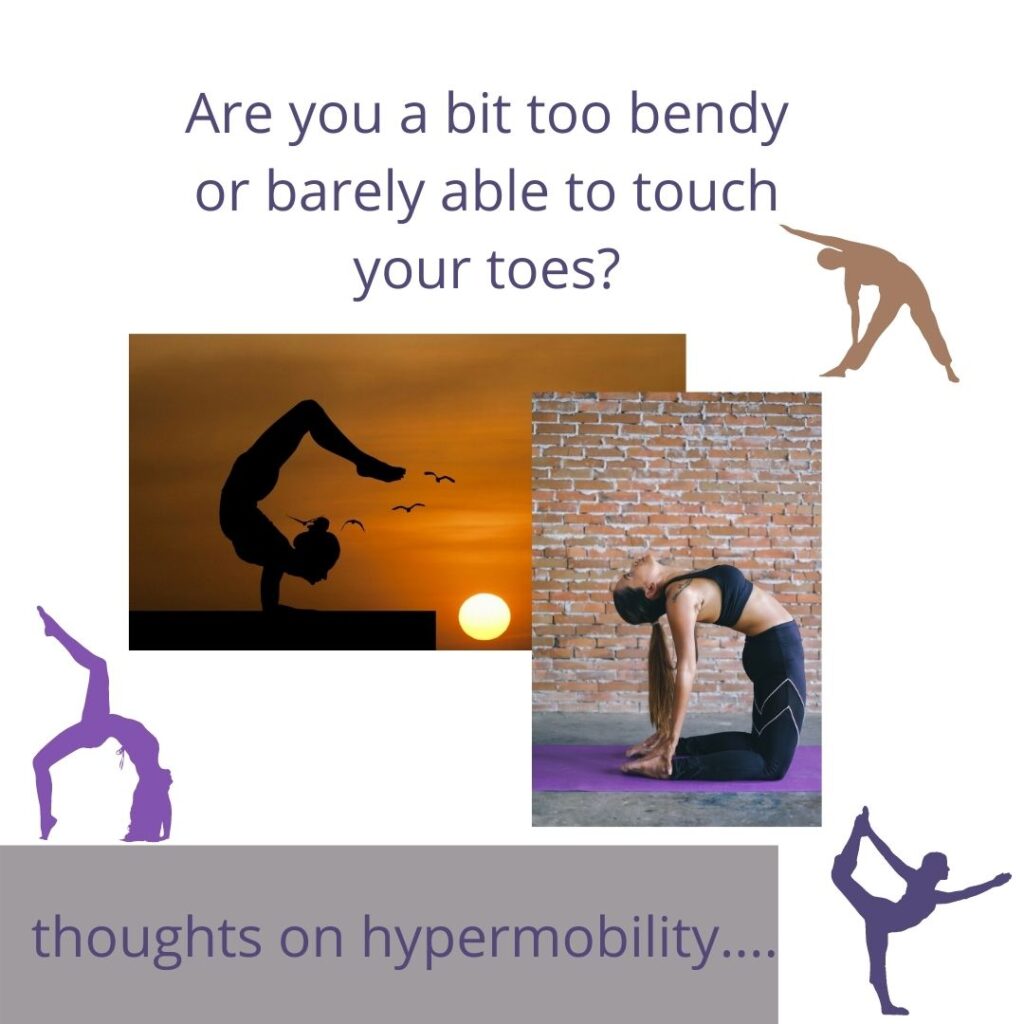
Often people don’t realise that they have it, because they’re very tight in their body and expect it to make them very loose and lax, which of course when they were young they probably were. Over time, excessive tension can be created in the body in an attempt to hold them self together. Learning to” leave your-self” alone (not over tightening the bodies’ musculature) you’ll find that a springiness and appropriate tone can eventually return. However, it’s not just about the releasing, it’s the directed thinking (the organising principle) that is so useful within the Alexander Technique for those people who are hyper-mobile, because it gives the form its structure again. Mentally body mapping can also be very useful too. There’s always a psychological aspect, a need to safely let go; letting go into a framework gives this sense of safety. Widening and releasing into the space around you, safely knowing where the boundaries of your-self are. If you’re familiar with the Alexander Technique directed thinking, it can be very helpful to mentally connect yourself up – thinking hand to wrist, then to elbow; whole arm into shoulder, which connects into spine etc. Thinking inward instead of outward can be very helpful with the “unsafe” feelings that often go with letting go. You can apply this thinking to anywhere in the body; to connect your legs into your back or even connect your head into your back. I’m sure it sounds rather strange, but put another way, if the musculature of your body has lost its integration, due to excessive tension, the deeper muscles won’t be doing the job of keeping you connected and supported, so the more superficial muscles will be taking too much responsibility for holding you together. When it comes to figuring out if you’re getting things right, if your body is feeling relaxed, yet well supported whilst in rest and in movement, then you’re going in the right direction.
Blog archive
bodymindfulness
